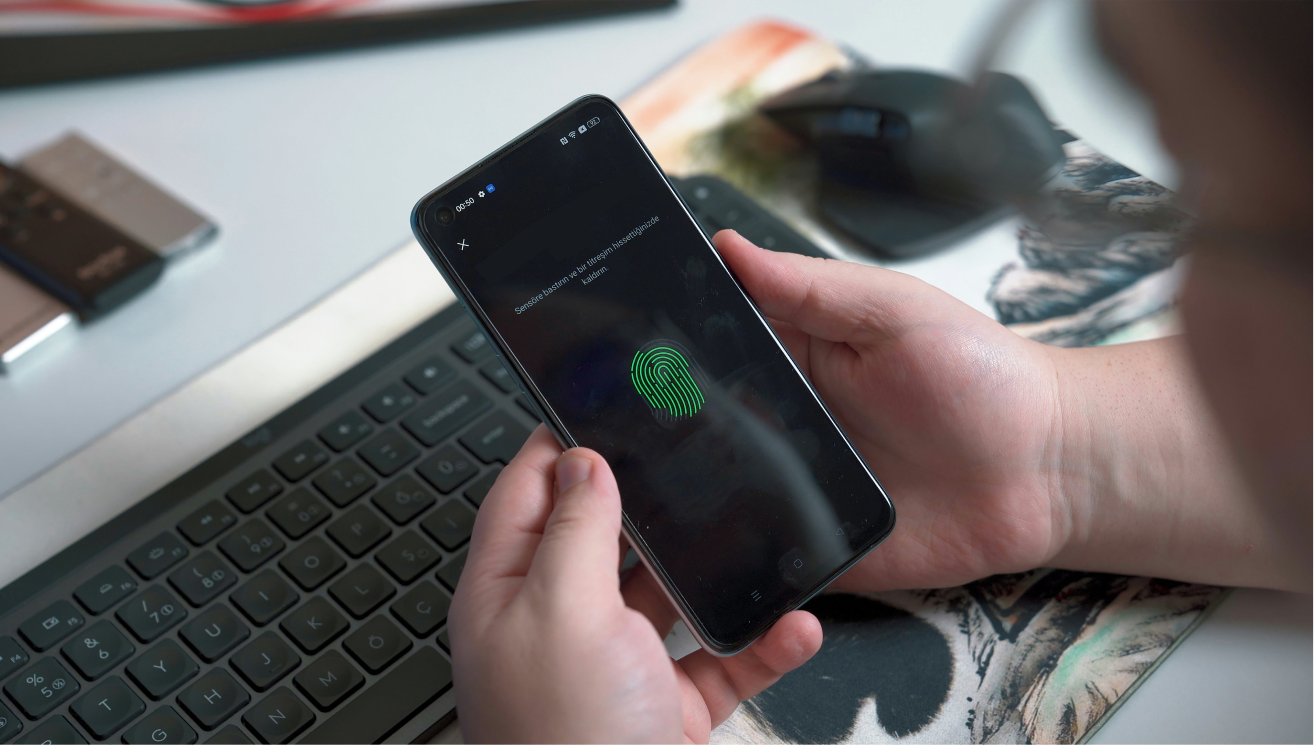Unlocking Security: The UX/UI Approach to Data Privacy
Every click, tap, and scroll involves a different exchange of information. So naturally, the design choices we make play a crucial role in shaping user perceptions and experiences related to data security. Join us on this exploration where privacy, aesthetics, and functionality meet.
The Significance of User Perception
User perception is the compass guiding us through the journey of data privacy. It's not just about the technical intricacies of encryption or the robustness of firewalls; it's about the trust users place in the digital spaces they navigate. So, it’s vital to remember the importance of user perception on data privacy, understanding the profound impact it has on fostering trust in this digital age.
Exploring Trust: The Foundation of Data Privacy
Trust is the cornerstone of any meaningful relationship, and the digital landscape is no exception. From the moment users interact with a website or app, their perception of how their data is handled becomes a crucial factor in determining the longevity of their engagement. Let’s take a deeper look into how the design aspect of a product can impact the trust users have in it.
The Psychology of Security:
The psychology of security is an intricate balance between the conscious and the subconscious. It's not just about secure protocols and encrypted connections; it's about creating an environment where users feel an innate sense of safety. Let's take a look at the layers of this and explore how UX/UI design becomes an important part of the journey of trust.
1. Visual Hierarchy: Guiding Perception for Reassurance
A better way to help build trust is by building a visually pleasing interface. Laying out your design in a way that is easy to navigate and works smoothly will help build trust in your product as the user will feel understood whilst interacting with it.
2. Consistency and Familiarity: The Comfort in Predictability
Humans find comfort in patterns and predictability. Maintaining design consistency across interfaces creates a sense of coherence, contributing to the user's trust in the platform.
3. Microinteractions: Building Trust Through Seamless Experiences
Examining the impact of microinteractions—small, subtle animations or responses to user actions—on user perception. These small interactions can contribute to a sense of responsiveness, indicating that the system is aware of and responsive to the user's inputs.
4. Language and Messaging: Communicating Assurance
Crafting clear and concise messages that convey transparency about data handling practices will contribute to a user's peace of mind. Having this text somewhere well highlighted and using everyday language instead of fancy terms will keep your brand on a level where your audience will understand you. Clear communication will help you build the trust you’re looking for.
In essence, the psychology of security in UX/UI design is about creating an environment where every interaction communicates reliability, predictability, and transparency. To discover more about how human psychology impacts UX, head over to our blog.

Designing for Clarity
Clarity is the guiding light that ensures users feel empowered and informed about their data privacy. We’re now going to discuss the importance of transparent communication and user-friendly interfaces, decoding the essence of designing for clarity in the world of data privacy.
Clear Communication: Illuminating the Path to Privacy
1. The Transparency Imperative
It’s critical to provide users with a clear understanding of how their data is collected, used, and protected. It not only fosters trust and confidence but it’s also a legal requirement.
2. Educating Through Design
The aim is to educate users on data privacy features seamlessly, without overwhelming them. By subtly integrating informative elements such as tooltips and strategically placed icons alongside user-friendly language, you can help users understand the privacy settings and in turn, create a sense of trust.
3. Visualising Data Practices
When it comes to working with data and private data, information can sometimes be quite complex. The best way to build trust is to simplify it. You want to provide users with an easy and simple design, language, and overall platform to put their details and trust into.
Navigating Consent and Control
UX/UI design takes the lead in presenting consent options and empowering users with intuitive control. We’re next going to explore the streamlined approach to consent design and the art of granting users seamless control over their data.
Streamlining Consent Design
1. Beyond Checkboxes: Innovating Consent Interfaces
It’s time to go beyond traditional checkboxes and introduce innovative designs that enhance user understanding. As we discussed earlier, micro-interactions are a great way to build a sense of trust whilst incorporating elements that captivate and inform.
2. Contextual Consent: Timing Matters
A key to this is presenting consent options at the perfect moments in the user journey and not just popping them in the journey because they need to be there. You always want to create the most seamless experience possible. This allows you to add contextual information for informed decision-making without disruption.
Empowering Intuitive Control
1. Personalised Privacy Settings: Tailoring to Users
Personalised settings tailored to individual preferences are a must-have in this digital age. It’s key to strike a balance between simplicity and granularity so users can customise their privacy options with ease, allowing them to feel in control.
2. User-Friendly Data Deletion: Beyond the Delete Button
A key aspect of data and privacy on digital platforms is the transparency you give users on their data and giving them easy options to opt in or opt out of data sharing. This transparency is so important in building trust with your audience.
3. Real-Time Control Feedback: Building Trust
You want these settings to be easily reached and changed by the audience. Having this will help build trust and allow them to make that decision as and when they feel comfortable.

Accessibility and Privacy
In the pursuit of data privacy, the intersection with accessibility stands as a crucial crossroads. Exploring the intersection of accessibility and data privacy involves a deep dive into the application of universal design principles. The focus is on creating interfaces that prioritise privacy while catering to the diverse needs of users.
This commitment to inclusive design practices extends to users with diverse needs. By emphasising the importance of providing customisable interfaces, users are empowered to tailor privacy settings to their preferences. This integration ensures compatibility with various tools, including screen readers, voice commands, and other assistive technologies. Inclusive user testing plays a pivotal role, allowing for the refinement and optimisation of privacy interfaces based on diverse user feedback and experiences.
Trends and Innovations in UX/UI for Data Privacy
The canvas of UX/UI design is enhanced with ever-evolving trends and groundbreaking innovations. Up next, we’re going to outline some of the currents that shape the present and the innovations that cast ripples into the future.
Current Trends in UX/UI Approaches to Enhance Data Privacy
Contemporary trends define UX/UI approaches to fortify data privacy. Design is adapting to the evolving demands of a privacy-conscious digital age, emphasising user education within interfaces. The rise of frictionless, consent-driven experiences is reshaping how users engage with privacy settings. Microinteractions and context-aware consent are becoming staples, providing users with a seamless and informed journey through data privacy decisions.
Innovative Design Solutions and Technologies Making Waves in the Field
The horizon of UX/UI for data privacy is painted with innovations pushing the boundaries of what's conceivable. Biometric authentication emerges as a forefront solution, enhancing security while providing a user-friendly experience. Privacy-focused AI algorithms play a pivotal role, offering intelligent insights without compromising user data. The integration of blockchain technology introduces a new evolution of security and transparency, promising heightened protection against data breaches. If you’re interested in how AI will impact product design you can head over to our blog to find out more.
Conclusion
Trust is the cornerstone of digital relationships and relies on a delicate balance of psychology, aesthetics, and of course, functionality. From psychological considerations to clear communication and seamless consent experiences, each design element contributes to crafting a secure digital environment.
Clarity emerges as the guiding light, ensuring users feel empowered and informed about their data privacy. The mix of accessibility and privacy takes centre stage, emphasising inclusivity and universal design principles. Trends and innovations in UX/UI highlight a shift towards user education; emerging technologies make data privacy the star of the show.
If you’re looking to bring your ideas to life or need help with your digital product, book a call with our founder today to talk in more detail.
Let's get started

Chat with James
Book a free discovery call with our co-founder to see if we’re a good match for your requirements.